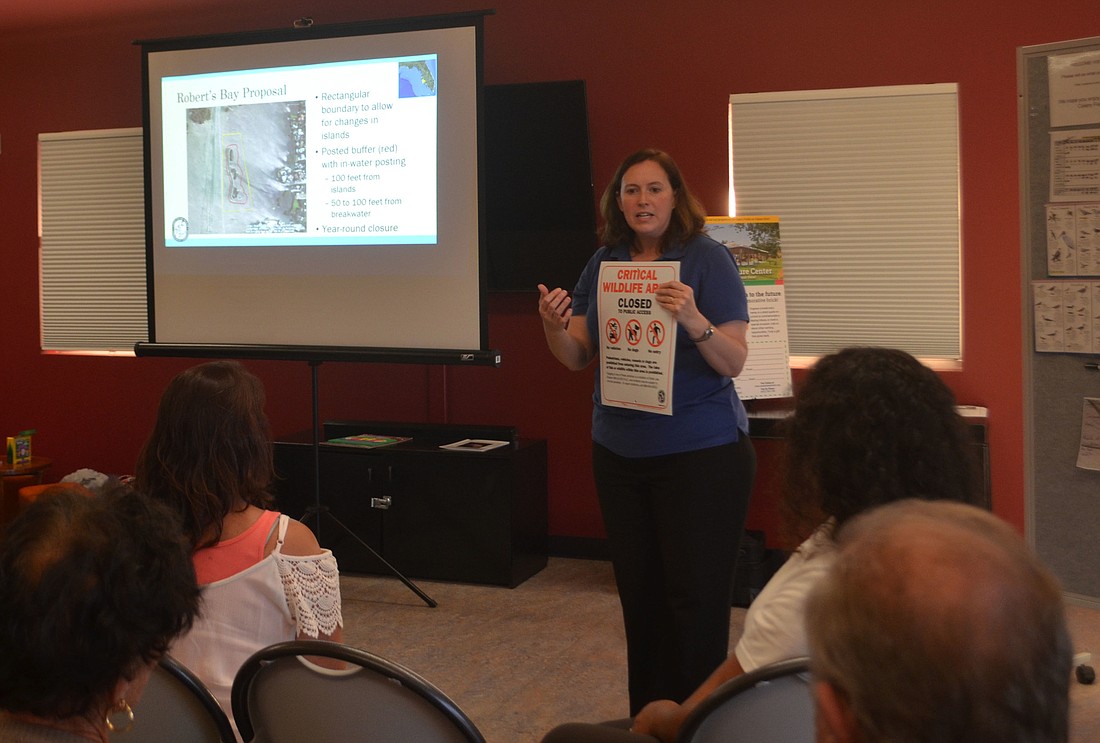- November 24, 2024
-
-
Loading

Loading

The Florida Fish and Wildlife Conservation Commission presented a proposal Thursday evening to establish a critical wildlife area on the Roberts Bay Islands.
The islands are located just south of the north bridge to Siesta Key and are one of the largest bird nesting areas in Sarasota Bay.
The critical wildlife area classification is used to denote small, manageable areas rich in wildlife, where signs alerting the public to the bird’s presence have not been effective in protecting the birds nest areas. The designation would create a 50 to 100 foot buffer area around the Roberts Bay Islands, effectively closing the islands to the public.
Though most spoke in favor of increasing protection for the nesting habitat during Thursday’s workshop at the Sarasota Audubon Nature Center, there was contention among those in attendance regarding the buffer’s distance from the island.
Terry Frankford operates a charter boat service with his daughter, Emily Frankford. The pair frequently take photographers and eco-tourists to the islands.
Terry Frankford spoke in favor of establishing a critical wildlife area on the islands, but he believes a 100-foot buffer would limit the ability of his clients to view the nesting birds and hurt his business.
“We will have to just end photography with 100 feet,” Terry Frankford said.
He thinks a 40-foot buffer would provide the birds with adequate protection while still allowing for visitors to view their habitat.
However, other audience members, like Sarasota Audubon President Jeanne Dubi, believe it’s better to err on the side of caution to avoid unintended harm to the islands’ nesting habitat.
“When you spook a bird, the general public just sees a bird flying away,” Dubi said. “But you really don’t know what the impact is.”
The commission is taking feedback from last night’s meeting into account ahead of their initial presentation to Florida Fish and Wildlife Conservation commissioners in September. A final proposal will be presented to commissioners in November.
If passed, the Florida Fish and Wildlife Conservation Commission would likely wait until fall 2017 to establish the critical wildlife area to avoid disturbing the birds during nesting season.